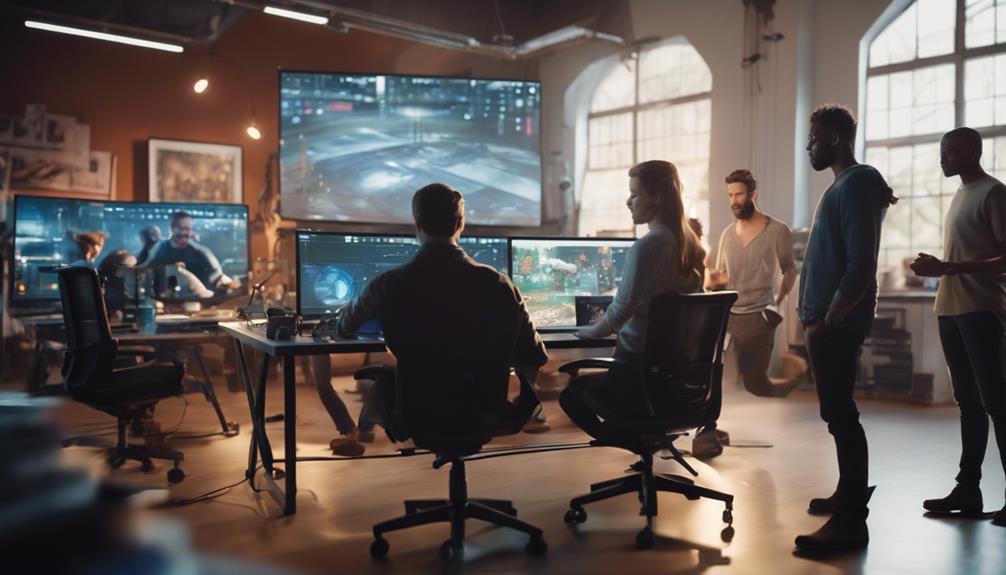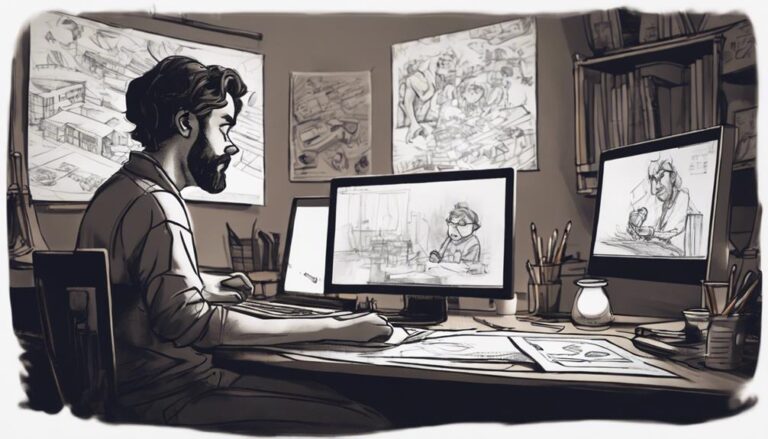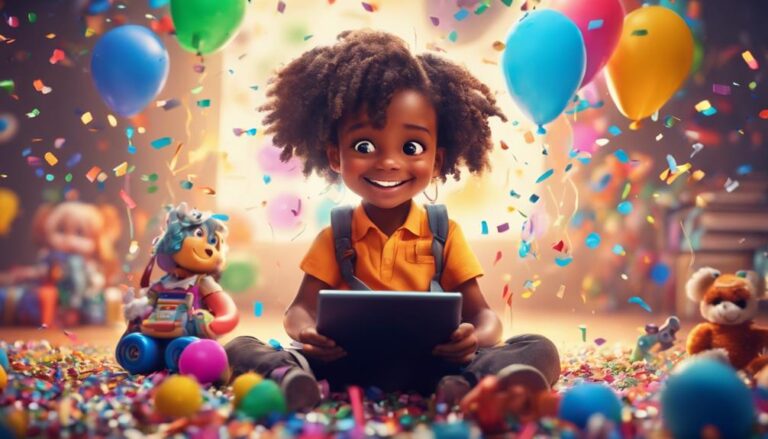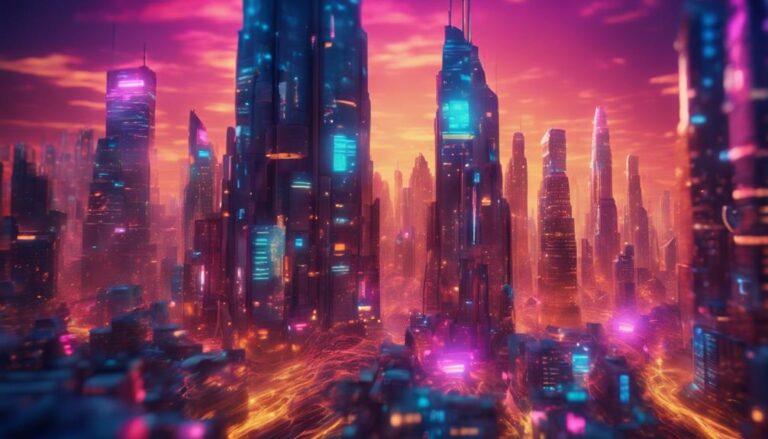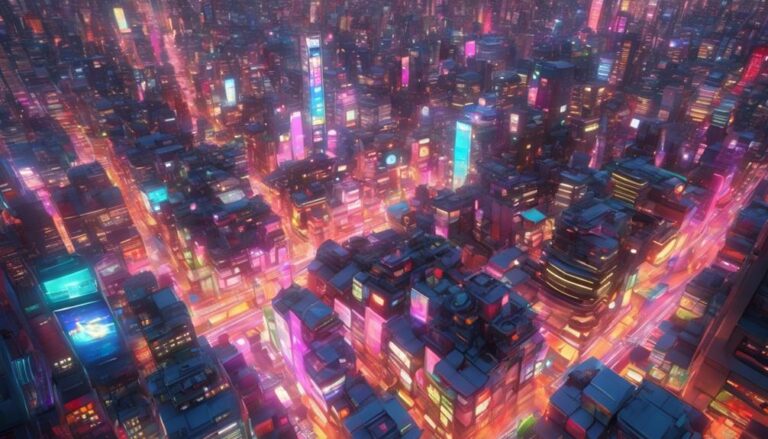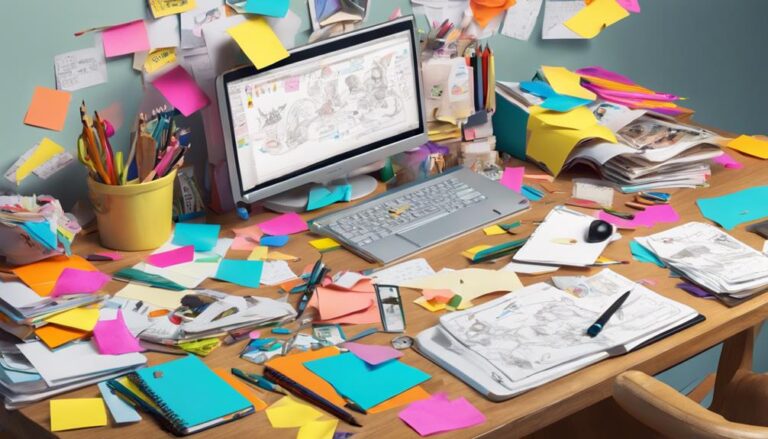Building a Game Animation Development Team
You're about to initiate a pivotal step in game development: building a game animation development team. It's a formidable task, but with a clear plan, you can set your team up for success. First, you need to define the team's structure and identify the key roles required to bring your game to life. But what are the essential skills and qualities you should look for in your team members? And how do you guarantee that your team is equipped to handle the unique challenges of game animation development? The answers to these questions will make all the difference.
Key Takeaways
- Define clear team roles and hierarchy to ensure each member knows their responsibilities and place within the team.
- Identify essential technical and soft skills required for each role, including proficiency in game engines and animation principles.
- Develop a strategic approach to attract top talent, showcasing the project's unique opportunities and challenges, and offering competitive salaries and benefits.
- Foster open communication, team bonding, and a sense of belonging among team members to promote collaboration and motivation.
Defining the Team's Structure
When building a game animation development team, you'll need to define a clear structure that outlines roles, responsibilities, and communication channels to guarantee efficient collaboration and high-quality output.
A well-defined team hierarchy is vital to certify that each member knows their place and responsibilities within the team. This hierarchy should be based on a clear departmentalization of tasks, grouping similar functions together to facilitate communication and workflow.
Departmentalization can be done in various ways, such as by function (e.g., animation, design, programming), by project phase (e.g., pre-production, production, post-production), or by platform (e.g., console, PC, mobile).
Regardless of the approach, the goal is to create a structure that allows team members to focus on their specific tasks while maintaining open communication channels with other departments.
Identifying Key Roles and Skills
Now that you've defined your team's structure, it's vital to pinpoint the essential roles and skills required for a successful game animation development project.
You'll need to identify the key animation roles, such as animators, technical artists, and animation directors, and outline their specific responsibilities.
Key Animation Roles Defined
To effectively develop game animations, you'll need to identify and fill key roles that require specific skills, including those of a lead animator, character animator, and technical animator. These roles are vital in establishing a solid animation pipeline that meets your project's technical and artistic requirements.
As the lead animator, you'll oversee the entire animation process, verifying that it aligns with the game's art direction and overall vision. You'll be responsible for creating a cohesive animation style and guiding the team to deliver high-quality animations.
Meanwhile, the character animator will focus on creating believable character movements, from idle animations to complex combat sequences. They'll work closely with the lead animator to maintain consistency in character design and movement.
The technical animator will be responsible for implementing animations in the game engine, setting up animation pipelines, and troubleshooting technical issues. They'll work closely with the programming team to guarantee seamless integration of animations with gameplay mechanics.
Essential Technical Skills
With a solid understanding of key animation roles, you'll need to identify the essential technical skills required for each position to guarantee a seamless animation pipeline. This is where the technical aspects of animation development come into play.
As you build your team, consider the following technical skills:
Proficiency in Game Engines: Your team should be well-versed in popular game engines such as Unity or Unreal Engine, including their animation tools and features.
Animation Principles: A solid understanding of the 12 basic principles of animation, including squash and stretch, anticipation, and staging, is vital for creating believable and engaging animations.
Scripting and Programming: Knowledge of scripting languages such as C#, Java, or Python is necessary for creating complex animations and integrating them with game logic.
3D Modeling and Texturing: Your team should have experience with 3D modeling software such as Maya or Blender, as well as texturing and shading techniques to create high-quality assets.
Soft Skills Required
You'll also need to identify the essential soft skills required for each role on your game animation development team, as these skills are critical to ensuring effective collaboration, communication, and problem-solving. As you build your team, consider the following soft skills:
| Role | Soft Skills | Description |
|---|---|---|
| Lead Animator | Effective Communication, Team Empathy | Ability to clearly articulate vision and goals, and understand team members' strengths and weaknesses. |
| Animator | Adaptability, Time Management | Capacity to adjust to changing project requirements and prioritize tasks to meet deadlines. |
| Technical Artist | Problem-Solving, Attention to Detail | Skill in resolving technical issues and ensuring high-quality output with attention to detail. |
When evaluating candidates, assess their soft skills through behavioral interviews, reference checks, and skills assessments. This will help you identify individuals who can work effectively in a team, communicate clearly, and adapt to changing project requirements. By prioritizing soft skills, you'll build a cohesive team that can deliver high-quality game animation on time and on budget. Remember, technical skills can be taught, but soft skills are essential for long-term success.
Finding the Right Talent
When building your game animation development team, finding the right talent is vital to success.
You need to identify key skills required for your project and know how to attract top talent to fill those roles.
To make informed hiring decisions, you must evaluate a candidate's creative fit and assess how well they can bring your game's vision to life.
Identifying Key Skills
To build a high-performing game animation development team, it's crucial to identify the key skills required for each role and prioritize finding talent that possesses those skills.
As you assemble your team, consider the specific needs of your game development project and the animation pipeline. What skills will your team members need to create high-quality animations, meet deadlines, and collaborate effectively?
When evaluating potential team members, look for these essential skills:
- Technical expertise: Proficiency in animation software, such as Maya or Blender, and programming languages like C++ or Python.
- Artistic ability: Strong understanding of animation principles, visual storytelling, and game development aesthetics.
- Problem-solving skills: Ability to troubleshoot technical issues, optimize animation performance, and adapt to changing project requirements.
Attracting Top Talent
Finding the right talent for your game animation development team requires a strategic approach that showcases your project's unique opportunities and challenges, attracting top candidates who are enthusiastic to take on the creative and technical demands of your game.
To attract top talent, you'll need to develop effective talent acquisition strategies that highlight your project's innovative aspects and competitive salaries. This includes leveraging social media, industry events, and online job boards to reach a wide pool of potential candidates.
When crafting your job postings, be sure to emphasize the exciting challenges and opportunities that your project offers. Highlight the cutting-edge technologies and tools that your team will be working with, and the impact that their work will have on the gaming industry.
Additionally, be prepared to offer competitive salaries and benefits packages that reflect the value you place on your team members' skills and expertise.
Evaluating Creative Fit
As you've crafted a compelling job posting that showcases your project's unique opportunities, now it's time to evaluate the creative fit of potential candidates, evaluating whether their skills, experience, and artistic vision align with your game's distinct style and technical requirements.
This is a pivotal step in building a cohesive game animation development team that shares your creative vision.
To assess the creative fit of candidates, consider the following key factors:
Artistic Alignment: Does the candidate's portfolio demonstrate a consistent style that aligns with your game's art direction?
Technical Skills: Can the candidate demonstrate proficiency in the tools and software required for your project?
Creative Problem-Solving: Can the candidate showcase their ability to think creatively and develop innovative solutions to complex animation challenges?
Collaborative Mindset: Does the candidate demonstrate a willingness to collaborate and take feedback from others to achieve a shared creative vision?
Building a Strong Team Culture
Establishing a strong team culture within your game animation development team involves fostering open communication, encouraging collaboration, and recognizing individual contributions. This foundation is vital for driving innovation, creativity, and overall success. By doing so, you'll create an environment where team members feel valued, empowered, and motivated to produce high-quality work.
To build a strong team culture, focus on team bonding activities that promote socialization and camaraderie. This can include regular team outings, game nights, or simply celebrating milestones and achievements. By investing in team bonding, you'll foster a sense of belonging and shared purpose among team members.
Offering creative freedom is also essential for building a strong team culture. Give your team members the autonomy to make creative decisions, take calculated risks, and experiment with new ideas. This freedom won't only boost morale but also encourage innovation and growth. By granting creative freedom, you'll demonstrate trust in your team members' abilities, which will lead to increased job satisfaction and engagement.
Managing the Development Process
You'll typically manage the development process by breaking down the project into smaller, manageable tasks and assigning them to team members based on their strengths and expertise. This approach enables you to maximize productivity, efficiency, and quality.
Effective time management is vital in game animation development, where deadlines are tight and multiple stakeholders are involved.
To streamline your development process, consider the following strategies:
- Prioritize tasks: Focus on high-priority tasks that require immediate attention, and allocate sufficient resources to guarantee their timely completion.
- Use Agile methodologies: Implement iterative development cycles, continuous testing, and regular feedback to guarantee flexibility and adaptability in your development process.
- Set realistic milestones: Establish achievable milestones and deadlines to maintain momentum and motivation among team members.
Essential Tools and Software
Selecting the right tools and software is critical in streamlining your game animation development process and driving your team's productivity, given that a well-chosen tech stack can make or break a project's efficiency.
As you build your game animation development team, you'll want to focus on tools that can help you create, manage, and deliver high-quality animations quickly and efficiently.
Game Engines are a vital part of your tech stack, providing the foundation for your game's core mechanics and animation systems.
Popular options like Unity and Unreal Engine offer robust animation tools and pipelines that can help you create complex animations with ease.
When choosing a Game Engine, consider factors like platform support, performance, and ease of use.
Your Animation Pipelines should also be optimized for efficiency, allowing your team to create, review, and iterate on animations quickly.
This can be achieved through the use of specialized software like Autodesk Maya or Blender, which offer advanced animation tools and integration with popular Game Engines.
Overcoming Common Challenges
Three common challenges can hinder the productivity of your game animation development team: inefficient pipelines, inadequate communication, and unrealistic expectations. These obstacles can substantially impact team dynamics and lead to frustration, delays, and decreased quality of work.
To overcome these challenges, consider the following strategies:
Streamline your pipeline: Identify bottlenecks and optimize your workflow to reduce unnecessary steps and improve efficiency.
Foster open communication: Encourage team members to share their concerns, ideas, and feedback to prevent communication breakdowns and guarantee everyone is on the same page.
Set realistic goals: Collaborate with your team to establish achievable milestones and deadlines, taking into account the complexity of tasks and available resources.
Monitor progress: Regularly track progress, identify potential issues, and adjust your strategy as needed to stay on track.
Scaling the Team for Success
As your game animation development team grows, it's essential to scale your operations efficiently to maintain productivity, quality, and morale, while also positioning your team for long-term success. To achieve this, you'll need to focus on strategic Team Expansion and effective Resource Allocation.
| Team Expansion Strategy | Resource Allocation | Expected Outcome |
|---|---|---|
| Hire experienced leads | Allocate budget for training | Improved team efficiency |
| Foster a positive company culture | Provide necessary tools and software | Increased employee satisfaction |
| Encourage open communication | Assign clear roles and responsibilities | Enhanced collaboration and productivity |
| Develop a performance metrics system | Allocate resources for performance feedback | Data-driven decision making |
| Plan for future growth and development | Allocate budget for research and development | Stay ahead of industry trends |
Frequently Asked Questions
What Is the Ideal Team Size for a Game Animation Project?
When determining ideal team size, you'll want to balance team dynamics with resource allocation. Typically, 5-15 members is ideal, allowing for diverse skill sets, efficient communication, and manageable workload distribution, while minimizing bureaucratic overhead and maximizing productivity.
How Do I Handle Conflicting Creative Visions Within the Team?
When handling creative clashes, you'll identify visionary roadblocks by recognizing conflicting opinions and values. You'll then facilitate open discussions, encouraging team members to share their perspectives, and collaboratively find common ground to drive the project forward.
Can I Build a Game Animation Team With Only Freelancers?
You can leverage freelance benefits like flexibility and cost-effectiveness by managing a virtual team. However, this requires strategic virtual management, clear communication, and defined expectations to guarantee successful project outcomes and high-quality game animation deliverables.
What Is the Role of a Producer in a Game Animation Team?
You'll find that a producer oversees the entire project, wielding significant authority. However, they'll also face challenges like budget constraints, tight deadlines, and team management, requiring strong leadership and problem-solving skills to deliver results.
How Do I Prioritize Tasks for a Game Animation Project?
You prioritize tasks by categorizing them into must-haves, nice-to-haves, and can-be-postponed. Focus on critical path tasks that impact the animation workflow, such as keyframe animation and rigging, to guarantee timely delivery and quality results.
Conclusion
As you build your game animation development team, remember that a strategic approach is key to success.
You've defined the team's structure, identified key roles and skills, found the right talent, and built a strong team culture.
With the right tools and software in place, you're now poised to manage the development process and overcome common challenges.
By scaling your team effectively, you'll drive productivity and deliver high-quality game animations that exceed expectations.

